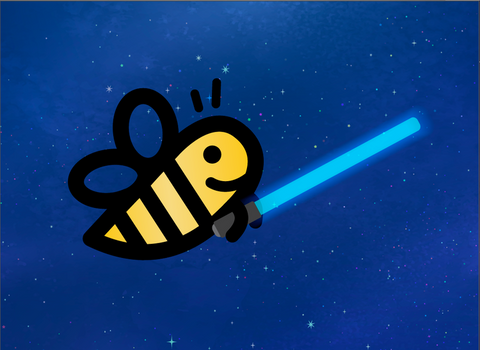
(Shared from the Healthy Hive Foundation)
In a galaxy far, far away, bees are being sent to… Mars! While this might seem like a story from an alternate universe, over 3,500 bees have been to space since NASA began sending them there in 1982. So how and why did this expedition begin?
Humans have been interested in Mars exploration and colonization for decades now. However, sustaining life on a foreign planet with a completely different atmosphere and environment definitely poses some issues. When you consider that the vast majority of the food we thrive on is provided thanks to pollinators, their presence wherever humans go becomes vital!
So with the undoubted importance of pollinators in our lives, and with sights set on space exploration, the Insect Flight Observations at Zero Gravity experiment began in 1982. In this experiment, NASA sent about 50 insects into space, 14 of these being honeybees, and observed the effects of zero gravity on their ability to fly. Of course, the honeybees had some trouble figuring out how to fly in this environment, possibly due to disorientation and confusion or a lack of high quality food.
Soon after, in 1987, the Comparison of Honeycomb Structures Built by Apis Mellifera experiment was conducted. During this, NASA sent 3,500 bees into space and monitored their ability to build honeycombs. Although they did experience some hive loss, the honeycombs they created were nearly identical to the ones built on Earth and they seemed to navigate around a bit easier than previously observed in 1982.
More recently, SpaceX hosted an experiment in 2013 known as the Megachile rotundata Proprioception and Flight Patterns in Microgravity experiment. As opposed to honeybees, alfalfa leafcutter bees, a solitary species who are considered especially efficient pollinators, were used for flight observations. Similarly to the 1982 experiment, these bees had a difficult time finding their wings in zero gravity.
Surely, these experiments are only the beginning of observing, and possibly even adapting, insects and pollinators to a zero or low gravity environment and raise many questions on what next steps could include. Does the key lie in raising bee eggs in space so that zero gravity is all they know? Is the only way for them to thrive to replicate Earth’s forces while in space? What we can do in the meantime, is cherish and protect our pollinators here on our perfect home planet. May the 4th be with you all!
